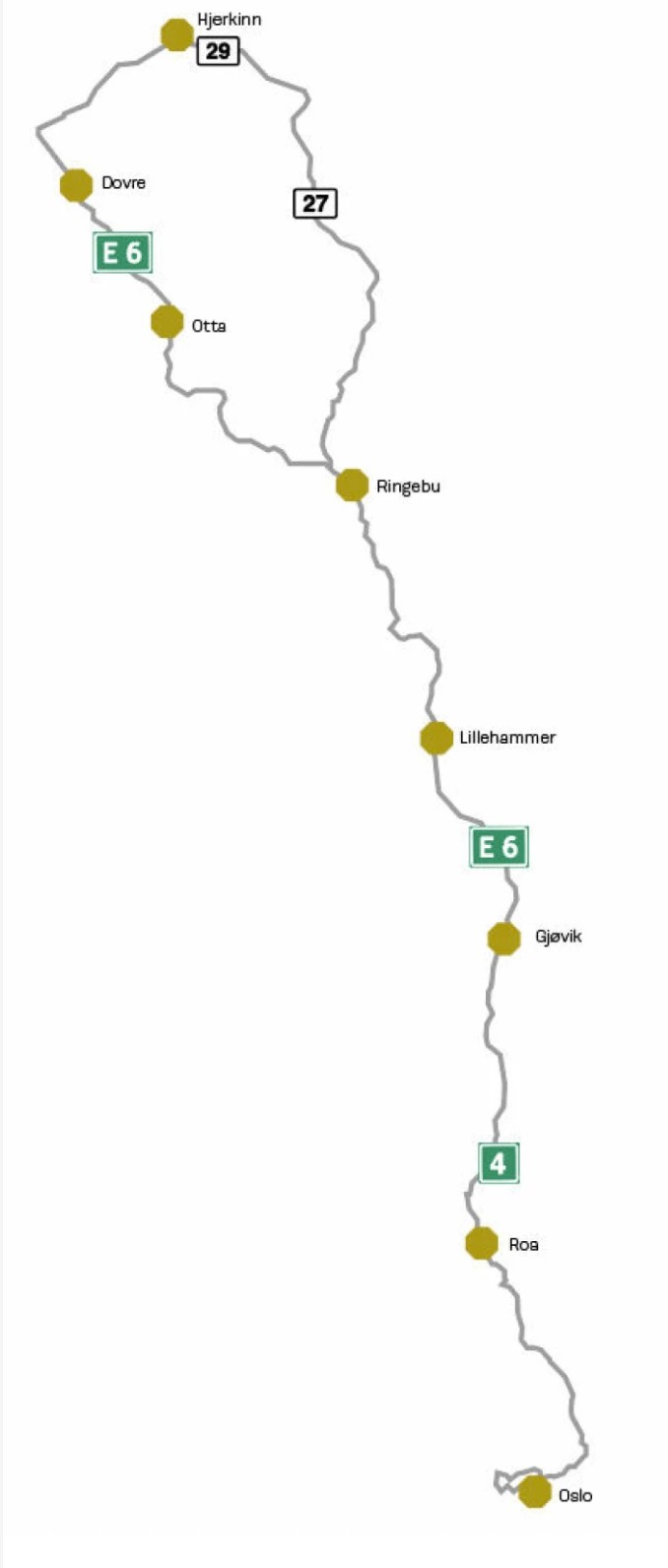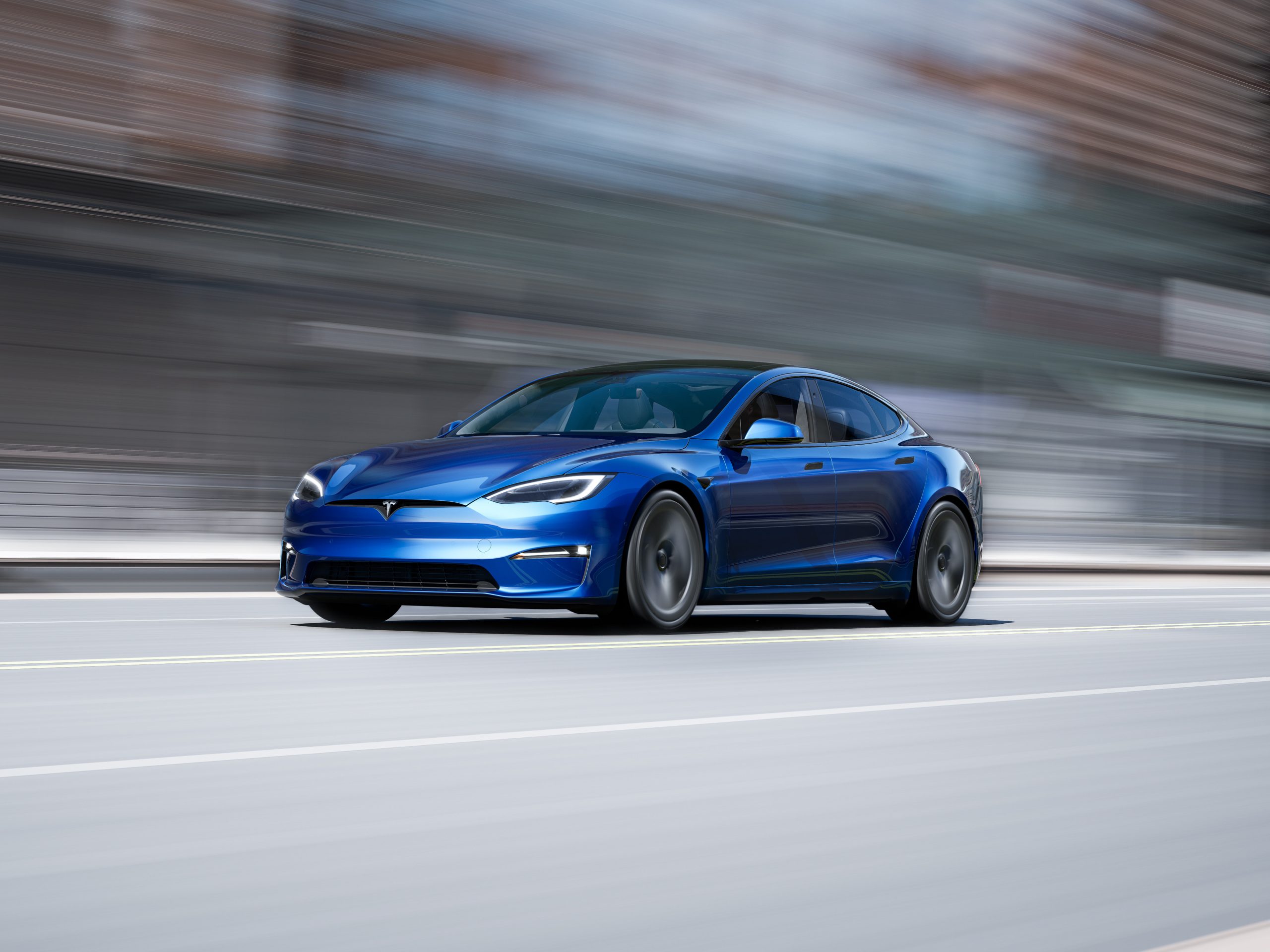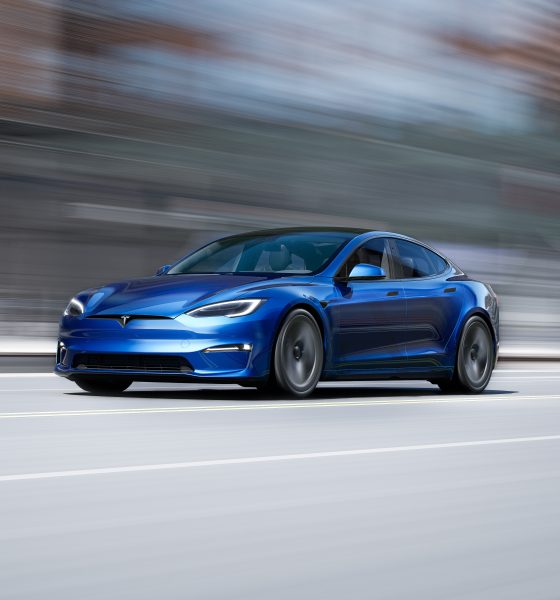The Tesla Model S recently dominated an extreme cold-weather testing study performed by Norweigan outlet Motor, accumulating 530 kilometers (329.327 miles) in some of the harshest Winter conditions available.
Of the twenty-nine electric vehicles tested during the assessment, the Model S was the only vehicle to achieve at least 450 kilometers of real-world driving range in frigid temperatures and snowy terrain.
Model S sets new record in the world’s biggest EV range test in Norway ❄️ → https://t.co/EJn7mt7Hdy
— Tesla Europe (@tesla_europe) February 1, 2023
The study utilized a variety of EVs from several different manufacturers. Tesla Model S “Standard,” Model X Plaid, and Model Y Rear-Wheel-Drive vehicles participated in the study, with Mercedes EQE 300, BMW i7, Volkswagen’s ID.5 and ID.BUZZ also taking part.
The publication broke down how it tests vehicles to maintain a fair and equal opportunity for desirable results. The test is performed every six months, winter and summer, following the same route:
“A loop through Oslo, up Rv4 to Gjøvik, from there E6 up to Hjerkinn, then east and around Rondane over Venabygdsfjellet, down to Ringebu and up E6 again.”
Credit: Motor
The cars are driven at the speed limit until their charge is depleted, and no driver support systems, such as cruise control, are permitted during the test.
Impressive in its own right, the Model S achieved a massive 530 kilometers of range on a single charge. Despite only being charged 98 percent “due to a technical problem,” the Model S Dual Motor All-Wheel Drive didn’t have a very close competitor. In fact, the vehicle that came closest was the Tesla Model X Plaid, which achieved 444 kilometers (275.889 miles). Right behind it were the BMW i4 and NINE ET7, which both achieved 434 kilometers before depleting their travel distance.
The Model S also had one of the lowest deviations from its WLTP range ratings, coming in at 16.40 percent. Of the top ten performing vehicles, the Model S had the lowest, with the Model X coming in second with 18.23 percent.
| Model | WLTP range | Achieved range | Percentage deviation, range |
| Tesla Model S Standard | 634 | 530 | -16.40% |
| Mercedes EQE 300 | 614 | 409 | -33.39% |
| BMW i7 xDrive60 | 595 | 424 | -28.74% |
| NINE ET7 | 580 | 434 | -25.17% |
| BMW i4 eDrive40 | 565 | 434 | -23.19% |
| Tesla Model X Plaid | 543 | 444 | -18.23% |
| Nissan Ariya 2WD | 533 | 400 | -24.95% |
| Volkswagen ID.5 Pro | 526 | 378 | -28.14% |
| Bid Han | 521 | 406 | -22.07% |
| Hongqi E-HS9 prototype 120 kWt | 515 | 389 | -24.47% |
Tesla has battled range loss in colder climates with a variety of techniques, including the most notable, which is the heat pump.
After including the heat pump on the Model Y, Tesla eventually implemented it on its three other vehicles, with the Model S and Model X receiving the addition with its Refreshed cars in 2021.
Elon Musk once said the heat pump was “some of the best engineering I’ve seen in a while.” It was developed by Joseph Mardall and other members of the Tesla engineering team. Mardall left Tesla in early 2021 to join Zipline, a robotics and autonomy-focused logistics company.
Another fun fact: the Model S beat the record set by the 2021 Tesla Model 3 Dual Motor Long Range, which made it 521 kilometers (323.734 miles).
I’d love to hear from you! If you have any comments, concerns, or questions, please email me at joey@teslarati.com. You can also reach me on Twitter @KlenderJoey, or if you have news tips, you can email us at tips@teslarati.com.

News
Tesla FSD V14.2.1 is earning rave reviews from users in diverse conditions
Tesla’s Full Self-Driving (Supervised) software continues its rapid evolution, with the latest V14.2.1 update drawing widespread praise.

Tesla’s Full Self-Driving (Supervised) software continues its rapid evolution, with the latest V14.2.1 update drawing widespread praise for its smoother performance and smarter decision-making.
Videos and firsthand accounts from Tesla owners highlight V14.2.1 as an update that improves navigation responsiveness, sign recognition, and overall fluidity, among other things. Some drivers have even described it as “more alive than ever,” hinting at the system eventually feeling “sentient,” as Elon Musk has predicted.
FSD V14.2.1 first impressions
Early adopters are buzzing about how V14.2.1 feels less intrusive while staying vigilant. In a post shared on X, Tesla owner @LactoseLunatic described the update as a “huge leap forward,” adding that the system remains “incredibly assertive but still safe.”
Another Tesla driver, Devin Olsenn, who logged ~600 km on V14.2.1, reported no safety disengagements, with the car feeling “more alive than ever.” The Tesla owner noted that his wife now defaults to using FSD V14, as the system is already very smooth and refined.
Adverse weather and regulatory zones are testing grounds where V14.2.1 shines, at least according to testers in snow areas. Tesla watcher Sawyer Merritt shared a video of his first snowy drive on unplowed rural roads in New Hampshire, where FSD did great and erred on the side of caution. As per Merritt, FSD V14.2.1 was “extra cautious” but it performed well overall.
Sign recognition and freeway prowess
Sign recognition also seemed to show improvements with FSD V14.2.1. Longtime FSD tester Chuck Cook highlighted a clip from his upcoming first-impressions video, showcasing improved school zone behavior. “I think it read the signs better,” he observed, though in standard mode, it didn’t fully drop to 15 mph within the short timeframe. This nuance points to V14.2.1’s growing awareness of temporal rules, a step toward fewer false positives in dynamic environments.
FSD V14.2.1 also seems to excel in high-stress highway scenarios. Fellow FSD tester @BLKMDL3 posted a video of FSD V14.2.1 managing a multi-lane freeway closure due to a police chase-related accident. “Perfectly handles all lanes of the freeway merging into one,” the Tesla owner noted in his post on X.
FSD V14.2.1 was released on Thanksgiving, much to the pleasant surprise of Tesla owners. The update’s release notes are almost identical to the system’s previous iteration, save for one line item read, “Camera visibility can lead to increased attention monitoring sensitivity.”
News
Tesla FSD Supervised ride-alongs in Europe begin in Italy, France, and Germany
The program allows the public to hop in as a non-driving observer to witness FSD navigate urban streets firsthand.

Tesla has kicked off passenger ride-alongs for Full Self-Driving (Supervised) in Italy, France and Germany. The program allows the public to hop in as a non-driving observer to witness FSD navigate urban streets firsthand.
The program, detailed on Tesla’s event pages, arrives ahead of a potential early 2026 Dutch regulatory approval that could unlock a potential EU-wide rollout for FSD.
Hands-Off Demos
Tesla’s ride-along invites participants to “ride along in the passenger seat to experience how it handles real-world traffic & the most stressful parts of daily driving, making the roads safer for all,” as per the company’s announcement on X through its official Tesla Europe & Middle East account.
Sign-ups via localized pages offer free slots through December, with Tesla teams piloting vehicles through city streets, roundabouts and highways.
“Be one of the first to experience Full Self-Driving (Supervised) from the passenger seat. Our team will take you along as a passenger and show you how Full Self-Driving (Supervised) works under real-world road conditions,” Tesla wrote. “Discover how it reacts to live traffic and masters the most stressful parts of driving to make the roads safer for you and others. Come join us to learn how we are moving closer to a fully autonomous future.”
Building trust towards an FSD Unsupervised rollout
Tesla’s FSD (Supervised) ride-alongs could be an effective tool to build trust and get regular car buyers and commuters used to the idea of vehicles driving themselves. By seating riders shotgun, Tesla could provide participants with a front row seat to the bleeding edge of consumer-grade driverless systems.
FSD (Supervised) has already been rolled out to several countries, such as the United States, Canada, Australia, New Zealand, and partially in China. So far, FSD (Supervised) has been received positively by drivers, as it really makes driving tasks and long trips significantly easier and more pleasant.
FSD is a key safety feature as well, which became all too evident when a Tesla driving on FSD was hit by what seemed to be a meteorite in Australia. The vehicle moved safely despite the impact, though the same would likely not be true had the car been driven manually.
News
Swedish union rep pissed that Tesla is working around a postal blockade they started
Tesla Sweden is now using dozens of private residences as a way to obtain license plates for its vehicles.

Two years into their postal blockade, Swedish unions are outraged that Tesla is still able to provide its customers’ vehicles with valid plates through various clever workarounds.
Seko chairman Gabriella Lavecchia called it “embarrassing” that the world’s largest EV maker, owned by CEO Elon Musk, refuses to simply roll over and accept the unions’ demands.
Unions shocked Tesla won’t just roll over and surrender
The postal unions’ blockade began in November 2023 when Seko and IF Metall-linked unions stopped all mail to Tesla sites to force a collective agreement. License plates for Tesla vehicles instantly became the perfect pressure point, as noted in a Dagens Arbete report.
Tesla responded by implementing initiatives to work around the blockades. A recent investigation from Arbetet revealed that Tesla Sweden is now using dozens of private residences, including one employee’s parents’ house in Trångsund and a customer-relations staffer’s home in Vårby, as a way to obtain license plates for its vehicles.
Seko chairman Gabriella Lavecchia is not pleased that Tesla Sweden is working around the unions’ efforts yet again. “It is embarrassing that one of the world’s largest car companies, owned by one of the world’s richest people, has sunk this low,” she told the outlet. “Unfortunately, it is completely frivolous that such a large company conducts business in this way.”
Two years on and plates are still being received
The Swedish Transport Agency has confirmed Tesla is still using several different workarounds to overcome the unions’ blockades.
As noted by DA, Tesla Sweden previously used different addresses to receive its license plates. At one point, the electric vehicle maker used addresses for car care shops. Tesla Sweden reportedly used this strategy in Östermalm in Stockholm, as well as in Norrköping and Gothenburg.
Another strategy that Tesla Sweden reportedly implemented involved replacement plates being ordered by private individuals when vehicles change hands from Tesla to car buyers. There have also been cases where the police have reportedly issued temporary plates to Tesla vehicles.











